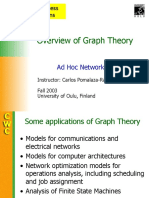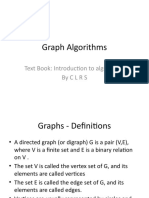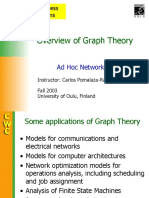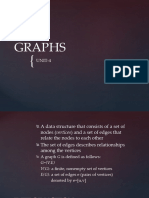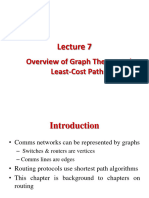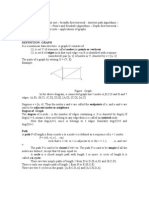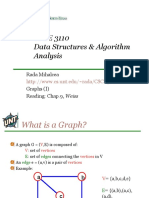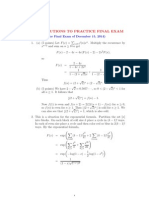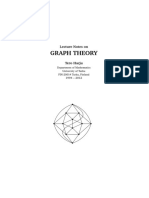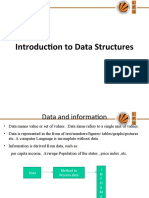0% found this document useful (0 votes)
85 views25 pagesGraph MST Prims Dijk
This document discusses graphs and algorithms for graphs. It begins by defining what a graph is - a set of vertices and edges. It describes directed and undirected graphs, complete graphs, subgraphs, connected vs unconnected graphs, and biconnected graphs. It also discusses graph representations using adjacency matrices. It then covers the degree of vertices in directed graphs. Finally, it defines minimum spanning trees and describes Prim's and Kruskal's algorithms for finding minimum spanning trees.
Uploaded by
Anjana JayakumarCopyright
© © All Rights Reserved
We take content rights seriously. If you suspect this is your content, claim it here.
Available Formats
Download as PDF, TXT or read online on Scribd
0% found this document useful (0 votes)
85 views25 pagesGraph MST Prims Dijk
This document discusses graphs and algorithms for graphs. It begins by defining what a graph is - a set of vertices and edges. It describes directed and undirected graphs, complete graphs, subgraphs, connected vs unconnected graphs, and biconnected graphs. It also discusses graph representations using adjacency matrices. It then covers the degree of vertices in directed graphs. Finally, it defines minimum spanning trees and describes Prim's and Kruskal's algorithms for finding minimum spanning trees.
Uploaded by
Anjana JayakumarCopyright
© © All Rights Reserved
We take content rights seriously. If you suspect this is your content, claim it here.
Available Formats
Download as PDF, TXT or read online on Scribd
/ 25








